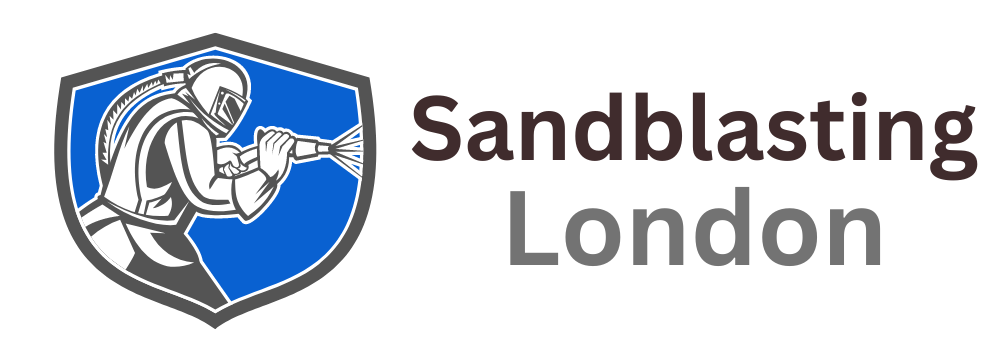Sandblasting in London:
Maximising Efficiency Through Abrasive Choice
Sandblasting is used in various industries, including construction and restoration, to clean, prepare, or etch surfaces. The key to a successful sandblasting project lies in carefully selecting abrasives. The choice of abrasive material directly impacts the process’s efficiency, quality, and safety. In this article, we will explore the best practices for abrasive selection in sandblasting, specifically focusing on projects in London.
Understanding Sandblasting and its Applications
What is Sandblasting?
Sandblasting, also known as abrasive sandblasting, is a surface preparation method that involves propelling abrasive materials through a blasting nozzle at high velocity. The impact of these abrasive particles on the surface helps remove contaminants, old coatings, and imperfections, leaving a clean and roughened substrate.
Applications of Sandblasting
Sandblasting in London finds diverse applications across industries. It is commonly used in the construction sector for surface preparation of buildings, bridges, and other structures. The automotive industry relies on sandblasting for cleaning and refinishing car parts. Manufacturers also use this technique to prepare surfaces before applying coatings or adhesives.
The Role of Abrasive Materials
The choice of abrasive material significantly influences the sandblasting process and the outcome. Various abrasive materials are available, each with unique properties that make them suitable for specific applications.
Understanding Abrasive Materials: Types and Characteristics
Let’s delve into the different types of abrasive materials available for sandblasting and their unique characteristics:
- Silica Sand: Traditional but less commonly used due to health concerns related to silica dust inhalation.
- Aluminium Oxide: Versatile and widely used for metal, wood, and glass surfaces.
- Steel Grit and Shot: Ideal for removing tough coatings and achieving a textured finish.
- Garnet: A natural mineral abrasive with excellent surface profiling capabilities.
- Glass Beads: Perfect for delicate surfaces and achieving a polished finish.
- Crushed Glass: An environmentally friendly alternative to traditional abrasives.
Factors Influencing Abrasive Selection
The selection of the appropriate abrasive material should consider several crucial factors.
Surface Material
Different surfaces react differently to various abrasives. While harder abrasives like aluminium oxide are suitable for metals, softer surfaces like wood may require gentler abrasives like glass beads.
Surface Condition
The current condition of the surface plays a vital role in abrasive selection. Heavily corroded surfaces may need more aggressive abrasives for effective cleaning.
Desired Surface Finish
The desired outcome dictates the abrasive choice. For example, achieving a smooth, polished finish on glass would require glass beads.
Environmental Impact
Environmental considerations are essential when selecting abrasives. Opting for eco-friendly options like crushed glass helps minimise environmental impact.
Operator Safety
Abrasive materials should be chosen with operator safety in mind. Dust-producing abrasives may require additional safety measures and protective equipment.
London-Specific Considerations for Sandblasting
London’s unique environment and project requirements demand careful abrasive selection. Consider the following best practices:
Adapting to London’s Climate
London’s climate, characterised by humidity, calls for abrasives that are less prone to clumping or absorbing moisture.
Considering Local Regulations and Restrictions
Complying with local regulations regarding abrasive use and environmental impact is vital. Verify which abrasive materials are allowed in London.
Assessing Project Specifics and Budget Constraints
Each project has distinct requirements and budget constraints. Choose abrasives that align with the project’s scope and budget.
The Consequences of Poor Abrasive Selection
Choosing the wrong abrasive can lead to several adverse outcomes, such as incomplete surface preparation, damage to the substrate, and high project costs.
Ensuring Operator Safety and Protection
Prioritising operator safety is crucial in sandblasting operations. Adopting safety measures and providing suitable personal protective equipment (PPE) is necessary.
- Personal Protective Equipment (PPE)
Operators should wear appropriate PPE, including respirators, eye protection, and protective clothing, to safeguard against abrasive particles.
- Safe Operating Procedures
Implementing safe operating procedures and providing training ensures operators correctly handle abrasive blasting equipment.
Proper Equipment Maintenance and Cleaning
Regular maintenance of sandblasting equipment ensures consistent performance and extends the lifespan of the machinery.
In conclusion, the abrasive selection in sandblasting services is critical to achieving successful project outcomes. Factors like surface material, condition, desired finish, and environmental impact should guide the selection process. London projects require special attention to climate, local regulations, and budget constraints. Prioritising operator safety and ensuring proper equipment maintenance further enhance the sandblasting process.
If you're searching "sandblasting near me" or if you're looking for a skilled sand blaster, then this is the perfect time to call us. Our skilled sandblasters in London will be more than happy to assist you. At Sandblasting London, we prioritise our customers' satisfaction. Do not forget to save our number to reach us quickly in the future!
Check our latest GBP update about choosing the right abrasive material for sandblasting in London.
02038353320
66 Shadwell Gardens,
London,
E12QH,
United Kingdom
